Gerzeh culture
Videos
Page
The Gerzeh culture, also called Naqada II, refers to the archaeological stage at Gerzeh, a prehistoric Egyptian cemetery located along the west bank of the Nile. The necropolis is named after el-Girzeh, the nearby contemporary town in Egypt. Gerzeh is situated only several miles due east of the oasis of Faiyum.

Comb with human image, Early Naqada II, 3500-3400 BC, Brooklyn Museum.
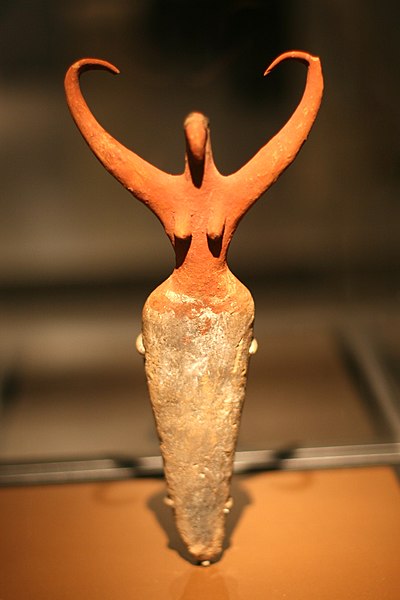
Figurine thought to be a deity, Gerzeh culture, Brooklyn Museum
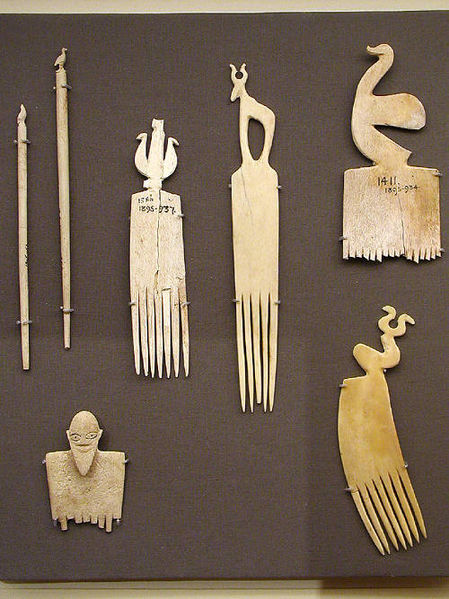
Ivory objects from the Naqada Culture.
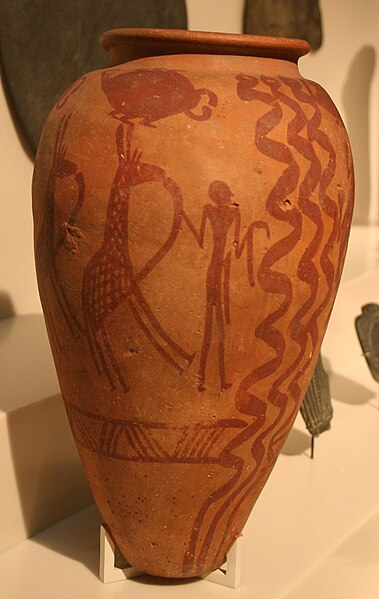
Paintings with symbols on Naqada II pottery. 3500-3200 BC.
Prehistoric Egypt
Videos
Page
Prehistoric Egypt and Predynastic Egypt is the period of time starting at the first human settlement and ending at the First Dynasty of Egypt around 3100 BC.

Artifacts of Egypt from the Prehistoric period, from 4400 to 3100 BC. First row from top left: a Badarian ivory figurine, a Naqada jar, a Bat figurine. Second row: a diorite vase, a flint knife, a cosmetic palette.
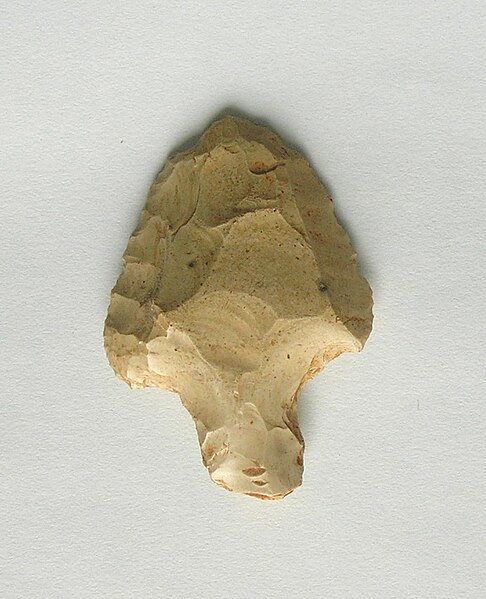
Aterian point from Zaccar, Djelfa region, Algeria.

Merimde culture clay head, circa 5,000 BC. This is one of the earliest known representations of a human head in Egypt.
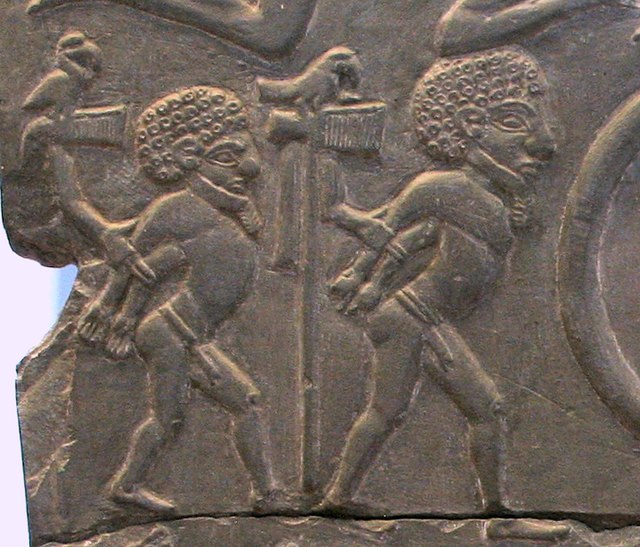
The prisoners on the Battlefield Palette may be the people of the Buto-Maadi culture subjected by the Egyptian rulers of Naqada III.